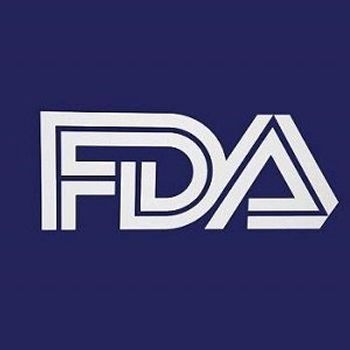
AJ201 Demonstrates Promising Phase 1/2 Results in Spinal and Bulbar Muscular Atrophy
Key Takeaways
- AJ201 demonstrated safety and efficacy in a phase 1/2 trial for SBMA, showing improvements in functional and biochemical markers.
- The trial showed a 17.6-meter gain in the 6-Minute Walk Test and a 0.8-point increase in the SBMA Functional Rating Scale.
AJ201 shows promising safety and efficacy in treating spinal and bulbar muscular atrophy, marking a potential breakthrough for patients.
Recently announced data from a phase 1/2 trial (NCT05517603) showed that investigational AJ201 (AnnJi Pharmaceuticals) was safe and led to meaningful treatment-related improvements in efficacy and exploratory measures among patients with spinal and bulbar muscular atrophy (SBMA). Coupled with positive changes in functional, biochemical, and molecular markers, the findings further support the development of AJ201 as a treatment for SBMA.1
The study, a randomized, double-blind clinical trial lasting approximately 12 weeks, featured 24 patients with SBMA who were randomly assigned to AJ201 at 600 mg/day or placebo. According to the data update, AJ201 demonstrated a safety and pharmacokinetic profile that was similar to previous healthy volunteer data, with no systemic drug accumulation observed.
Although the study was not powered for efficacy, the drug did show encouraging signals on several clinical end points. Overall, treatment with the novel compound led to a clinically meaningful 17.6-meter gain in the 6-Minute Walk Test and a 0.8-point increase in the SBMA Functional Rating Scale (SBMAFRS) on average. In contrast, those assigned to placebo experienced slight declines on these assessments during that time.
"The study results are highly encouraging. AJ201 has shown evidence of clinical benefit, demonstrated through improvements in functional assessments, positive shifts in serum biomarkers, and RNA sequencing data supporting activation of the Nrf2 pathway. Together, these findings reinforce the therapeutic potential of AJ201," Principal investigator Christopher Grunseich, MD, head of the Inherited Neuromuscular Diseases Unit at the National Institute of Neurological Disorders and Stroke, National Institutes of Health, said in a statement.1
Additional efficacy data showed that AJ201 led to a reduction in serum creatine kinase and myoglobin levels, two biomarkers of chronic muscle damage and ongoing muscle fiber degeneration. Within the AJ201 cohort, most patients were considered responders across the measures and end points used, including 6MWT (11 of 15), SBMAFRS (6 of 7), creatine kinase (14 of 14), and myoglobin (11 of 12). Furthermore, those on the investigational agent had significant improvements in the physical function component of the SF36v2 quality-of-life questionnaire whereas those on placebo declined (P = .026).
AJ201 also had an effect on biomarkers of SBMA, including mutant androgen receptor (mAR) levels. Overall, nuclear mAR levels were reduced by more than 50% in 53% of AJ201-treated patients compared with 17% of those on placebo. RNA sequencing of muscle biopsies from AJ201-treated patients showed activation of the Nrf2 pathway and modulation of disease-relevant signaling cascades, changes not observed in the placebo group, supporting AJ201’s therapeutic mechanism of action.
"SBMA is a slowly progressing neuromuscular disorder, and I am greatly encouraged by the positive clinical outcomes observed after a relatively short course of AJ201 treatment," Wendy Huang, PhD, chief executive officer at AnnJi, said in a statement.1 "AnnJi is committed to advancing the program into Phase 3 clinical trials, with the aim of delivering a safe, effective, and much-needed therapeutic option for patients living with SBMA—a disease that currently lacks any FDA-approved treatments."
AJ201 is a novel therapeutic candidate for spinal and bulbar muscular atrophy (SBMA) that targets mutant androgen receptor (AR) aggregation by activating Nrf2, Nrf1, and Hsf1 pathways—enhancing antioxidant responses, proteasome-mediated degradation, and protein folding. In SBMA animal models, the agent improved motor function, reduced muscle atrophy, and decreased mutant AR accumulation in muscle tissue. In addition to SBMA, AJ201 is being explored in other neurodegenerative disorders of polyQ diseases, such as Huntington disease and spinocerebellar ataxia type 2.2
Participants in the study were adult males aged 18 and older with a confirmed genetic diagnosis of SBMA, defined by at least 36 CAG repeats in the androgen receptor gene and clinical evidence of muscle weakness. To be eligible, individuals had to be ambulatory (with or without assistance), demonstrate a minimum level of physical function (SBMAFRS ≥26), and be able to complete the 2-minute walk test. Participants were required to comply with study procedures, including blood draws and muscle biopsies, and to use effective contraception if of reproductive potential. Informed consent and the ability to communicate with study staff were also required.
Key exclusions included individuals who were nonambulatory, had contraindications to MRI, or had used investigational drugs or muscle metabolism–affecting agents within a month prior to study drug administration. The study also excluded participants with significant cardiovascular or cerebrovascular disease, renal impairment (creatinine clearance <90 mL/min), abnormal liver function tests, or serious medical conditions that posed safety concerns. Those with a history of allergic reactions to curcumin analogs or components of the study drug were also excluded.
REFERENCES
1. AnnJi Pharmaceutical Company Announces Positive Phase 1/2a Results for AJ201 in Spinal and Bulbar Muscular Atrophy (SBMA) Patients. News release. AnnJi Pharmaceutical. May 22, 2025. Accessed June 3, 2025. https://www.prnewswire.com/news-releases/annji-pharmaceutical-company-announces-positive-phase-12a-results-for-aj201-in-spinal-and-bulbar-muscular-atrophy-sbma-patients-302462641.html
2. AJ201. AnnJi Pharmaceutical. Accessed June 3, 2025. https://www.ajpharm.com/aj201/
Newsletter
Keep your finger on the pulse of neurology—subscribe to NeurologyLive for expert interviews, new data, and breakthrough treatment updates.




















